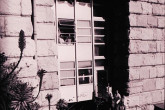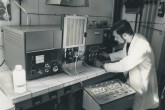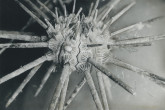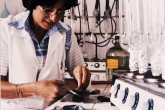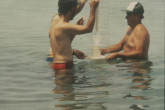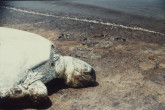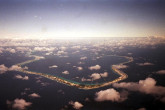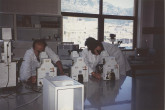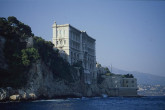Marine Environment Laboratories, Monaco
The IAEA’s three marine environmental laboratories in Monaco use nuclear and isotopic techniques to study the environmental impact of radionuclides, trace elements and organic contaminants and offer mitigation strategies to governments. These tools are also used to help experts from around the world monitor and address climate change, habitat destruction and biodiversity loss.
The first IAEA laboratory in Monaco was established in 1961 under an agreement with the Principality of Monaco to undertake studies on the effects of radioactivity on the sea and on marine life. Over the years the activities of the laboratory expanded with the changing nature of pollution in the oceans and came to include the study of pollutants such as such as pesticides, polychlorinatedbiphenyls (PCBs), petroleum hydrocarbons, polycyclic aromatic hydrocarbons (PAHs) as well as toxins associated with harmful algal blooms.
The laboratories have provided essential scientific and analytical support for studies of pollutants worldwide: in the Atlantic, North and South Pacific, Indian, Arctic and Antarctic Oceans and the Far Eastern, Mediterranean, and Black Seas. Regional studies have been conducted in the Gulf, the Irish, Kara and Caspian Seas, New Caledonia and the Mururoa and Fangataufa Atolls.
Today, the three laboratories in Monaco assist Member States in assessing coastal and marine pollution and improving seafood safety by developing analytical methods for the measurement of contaminants. They also apply stable isotopic techniques to study pollution processes and identify the sources of coastal pollutants. This information helps decision-makers implement pollution monitoring programmes to protect the marine environment and support the delivery of ecosystem services. The laboratories also produce certified reference materials to help laboratories worldwide calibrate their instruments and thereby generate reliable quality-assured data. They also organize training courses for scientists from around the world on the analysis and monitoring of contaminants in the marine environment.



